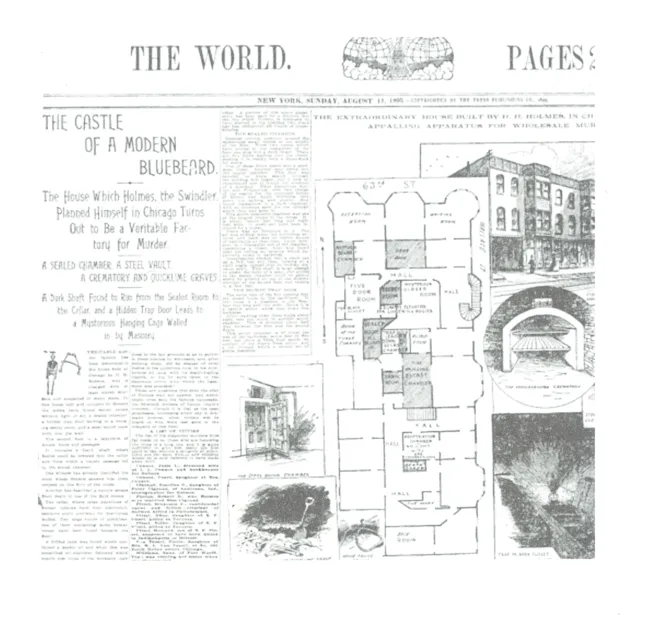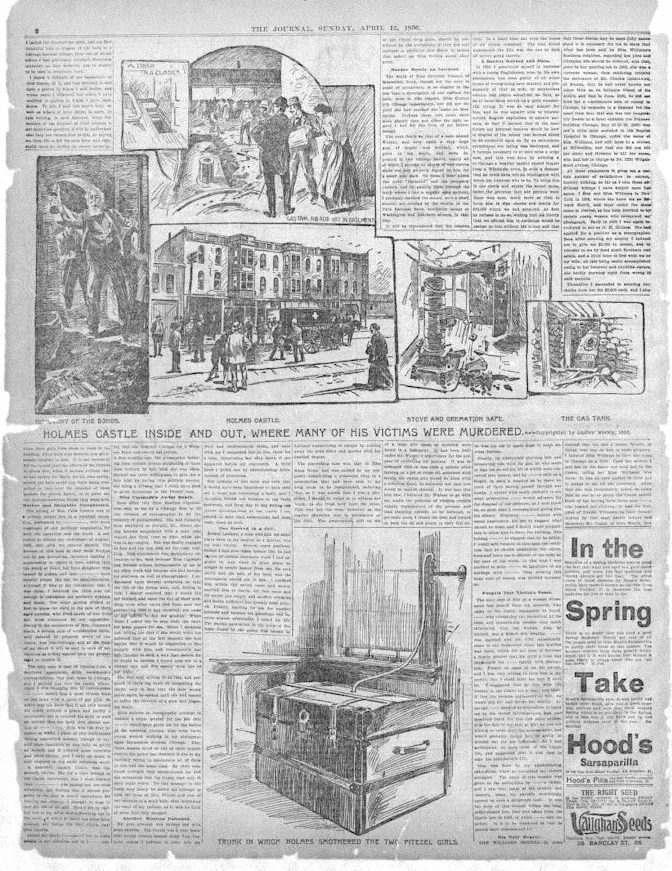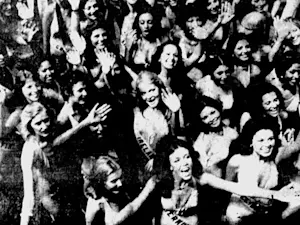
The Sinister Life and Crimes of H.H. Holmes
Herman Webster Mudgett, better known by his alias H.H. Holmes, is infamously remembered as one of America's first serial killers — he's believed to have killed between 20-200 people. Sometimes called the "Beast of Chicago," Holmes' horrifying crimes took place primarily in a building later dubbed the "Murder Castle." His heinous acts have inspired numerous books and documentaries, most notably Erik Larson's "The Devil in the White City." Join us as we explore Holmes' early life, the construction of his infamous murder site, his fraudulent schemes, and his ultimate arrest and execution.
Early Life and Criminal Beginnings
Believed to have been born around May 16, 1861, in Gilmanton, New Hampshire, H.H. Holmes came from an affluent family and exhibited intelligence from a young age. However, his childhood was marked by disturbing behavior, including an interest in surgery that led him to practice on animals. Some accounts even suggest he might have been involved in the death of a friend.
Holmes' life of crime began during his time as a medical student at the University of Michigan, where he stole corpses to commit insurance fraud. He would use these bodies to file false insurance claims, profiting from the macabre schemes that foreshadowed his later, more gruesome crimes.
The Murder Castle
 Holmes' Castle.
Holmes' Castle.
In 1885, Holmes moved to Chicago and began working at a pharmacy under the alias Dr. Henry H. Holmes. After allegedly killing the original owner, he took over the business. Nearby, he constructed a three-story building designed with sinister intentions, which later became known as the "Murder Castle." This structure included his living quarters and numerous rooms outfitted for torture and murder, complete with trapdoors, chutes, and a basement kiln for disposing of bodies.
 On August 11, 1895, Joseph Pulitzer's The World published a fictional floor plan of Holmes' "Murder Castle" with (left to right and top to bottom): a vault, a crematorium, a trapdoor in the floor, and a quicklime grave with bones.
On August 11, 1895, Joseph Pulitzer's The World published a fictional floor plan of Holmes' "Murder Castle" with (left to right and top to bottom): a vault, a crematorium, a trapdoor in the floor, and a quicklime grave with bones.
During the 1893 Columbian Exposition, Holmes transformed his building into a hotel, attracting visitors from all over the country. Tragically, many of these guests never left. Holmes would seduce, swindle, and murder numerous victims, primarily women. He often got engaged to his victims, only for them to mysteriously disappear, while others were lured with promises of employment.
Fraudulent Schemes and Capture
After the World's Fair, Holmes left Chicago but continued his fraudulent activities. Partnering with Benjamin Pitezel, they devised a plan for Pitezel to fake his death to collect a $10,000 insurance payout. Holmes, however, murdered Pitezel and misled his widow, convincing her that her husband was still alive. Tragically, he also killed three of her children.
 The April 12, 1896, edition of New York Journal, showing the exterior and interior of Holmes' "Castle"; the bottom picture is the trunk he used in the murder of the Pitezel sisters.
The April 12, 1896, edition of New York Journal, showing the exterior and interior of Holmes' "Castle"; the bottom picture is the trunk he used in the murder of the Pitezel sisters.
Holmes' criminal spree ended in November 1894 when he was finally apprehended. While in custody, he confessed to numerous murders, providing varying accounts that muddied the waters but clearly established his guilt. Convicted in 1895, Holmes was sentenced to death and hanged on May 7, 1896.
H.H. Holmes' legacy as one of America's first and most prolific serial killers continues to fascinate and horrify. His life and crimes have been extensively documented, offering a chilling glimpse into the mind of a man capable of unimaginable evil.
Reference: H.H. Holmes























